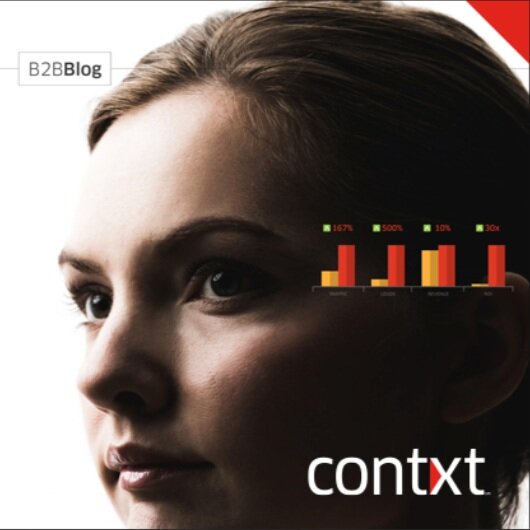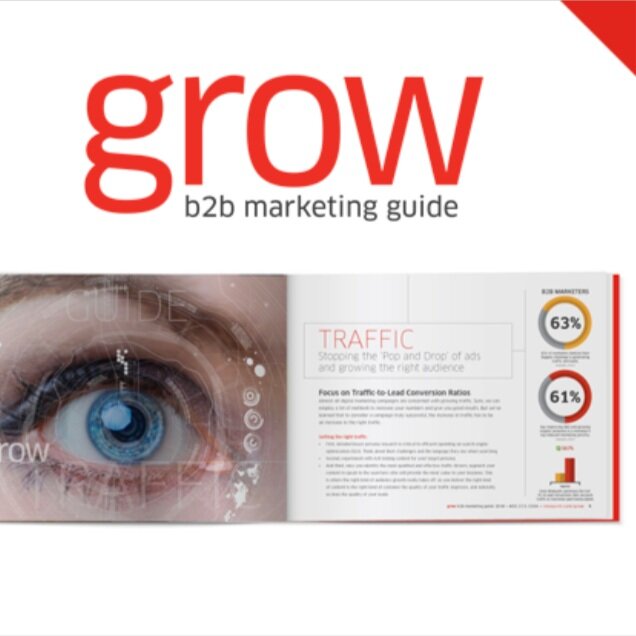Critics of literature and visual storytelling understand that the teller of any story must observe set rules. One of the primary edicts involves a character’s arc. Whether the creator is adhering to Joseph Campbell’s tried-and-true hero’s journey or the new school of Save the Cat, their primary characters need to make visible progress through the story. Any book or movie is rendered pointless if the characters don’t evolve in the wake of the adversity they face and the decisions they make.
The story of B2B inbound marketing is no different, and its primary protagonists—marketing agencies and the B2B businesses that become their clients—have a relationship that relies on similar positive change and forward momentum. As inbound itself has matured, both sides have learned more about what strategy entails and what the other needs from them. But, for all intents and purposes, this is still a relationship in a transitional phase.

It’s no longer acceptable to simply recognize a problem and onboard a third party to solve it.
Taking a look at where this fundamental partnership is heading in the B2B world is an important exercise. It gives us context about where both sides are coming from, the views of the future that agencies and their clients have, and the ways those views overlap and diverge from each other. Let’s examine how this fundamental building block of B2B marketing is evolving.
Clients are smarter
As inbound marketing became en vogue for both consumer-facing and B2B businesses, many companies had a piecemeal approach to forging partnerships with agencies. Often, a company would recognize a new methodology in inbound that they had to adopt or catch up with, then add a specialist to handle it. They then ended up with a glut of digital agencies and vendors, handling everything from overarching strategy to SEO.
Now, B2B companies know more and do more research on their own end. Not coincidentally, clients on the whole are working with fewer total agencies (as agencies expand services) and even taking care of some elements in-house. It’s no longer acceptable to simply recognize a problem and onboard a third party to solve it—B2B companies are looking at their competitors and not just asking to keep up, but also to leap ahead with smart inbound tactics.
Because of that, clients have more specific demands and expectations from their partners. That, in turn, has led to a perceived drop in positive agency-client relationships, stemming from some B2B companies having to play a massive game of catch-up and others no longer satisfied simply by having an agency try out buzzwords and new engagement models on them.
We’re looking now at a moment when agencies and clients must realize their ideal relationship is a more collaborative one, where each side is bringing their experience and expertise to the table.
Agencies are more focused
Despite many B2B companies focusing on just partnering with one or two agencies, they’re often seeking out a blend of firms and specialists in an area of particular need. Whether that means finding a partner that is particularly adept at social media or one with a decent background in B2B manufacturing, specialization is in high demand.
The best B2B inbound agencies know what they’re best at and focus on helping clients with that need. Just as most inbound writing hinges on knowing your ideal buyers and crafting targeted personas, these agencies themselves are undergoing that exercise. Inbound agencies are numerous, even when broken down along B2C/B2B lines. An agency that hones in on performance instead of creative services makes them stand out in the crowd and provides potential clients some assurance of their acumen from the beginning.
There are general norms that any agency still needs to adhere to. Speed agility, and clear communication are still paramount for having happy clients. But outside of these and other cardinal virtues of B2B inbound, we’re seeing the beginning of greater fragmentation in the agency world. Not only does this further encourage collaborative partnerships, it will also lead to a future where client-agency partnerships are set up better for the long haul because of their shared experience in specific concentrations.
Forward-thinking partnerships are the new norm
Whereas trends used to almost constantly shift in the inbound world of just a few years ago, the landscape now and the client-agency relationships within it are more like the formation of the early universe: Where once there was chaos and a lack of stability, there is now the forming of a solid foundation. The diversely-developed concepts of inbound marketing are solidifying into a potent and unassailable methodology just as dust and molecules formed into the first stars and planets.

An agency-client relationship situated for a long and fruitful run relies on both sides being more than just on the same page — they have a shared vision and a deep understanding of one another.
Today’s inbound is not about clients just handing off a workload to an agency or agencies making one-size-fits-all suggestions. As we mentioned before, collaboration is the name of the game, and strategizing together must involve looking ahead toward long-term mutual goals.
For instance, if you’re a manufacturing company, you can’t hold an agency to a limited set of deliverables and expect performance to change. Just because that works in producing the most units from a line doesn’t mean it works in a marketing strategy. You have to listen to the agency and provide enough flexibility in the strategies to improve and change for the better. If you write the playbook together, you will receive the most benefit from this shift in ideology.
Because of that outlook, qualities such as transparency and accountability are being valued more by both sides. An agency-client relationship situated for a long and fruitful run relies on both sides being more than just on the same page — they have a shared vision and a deep understanding of one another. Clear communication, responsiveness, transparency of each party’s aims and respectful dialogue—these are the cardinal virtues that differentiate a good agency-client relationship from a merely adequate one.
It’s an exciting time, full of potential for enhanced and positive partnerships. We know more about B2B inbound and what it takes to make it work than ever before. Now is the time for agencies and clients to get on the same page and make a massive leap forward together, which will exponentially increase the efficacy of the B2B agency-client dynamic. ![]()







 By
By 